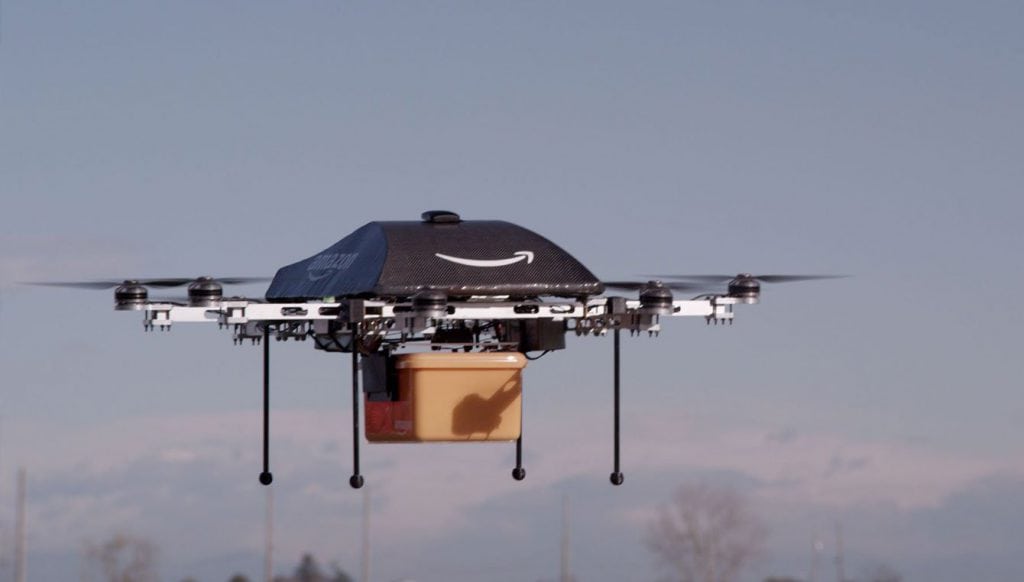
Amazon package delivery
The aviation and drone communities do not need airspace redesign. What they need are integration tools. That was the sentiment among a panel of industry executives at the Air Traffic Control Association’s Blue Skies panel in Washington, D.C. Thursday.
Similar discussions were underway a stone’s throw away at The Capitol for the U.S. House Transportation & Infrastructure Committee’s hearing on airspace integration of new aircraft. Panel moderator David Grizzle introduced the panel with a phrase from Congressman Frank LoBiondo, the committee’s chairman: “Air traffic control of conventional aircraft relies on a number of procedures, including extensive voice communications between pilots and controllers over the radio. Flying cars and UAS will be far different.”
This new ecosystem will be different in that automated aircraft will communicate with other automated systems on the ground, LoBiondo said. “So the question here is, how will the new aircraft and systems interoperate with existing ones and also with each other?”
These are questions that will need to continue to be discussed among the industry, as expressed by the panelists Thursday.
The FAA is amidst its multi-year NextGen initiative to modernize U.S. airspace for increased safety and efficiency for all air vehicles, including drones large and small. The FAA began the effort in 2007 and aims to have all components in place by 2025.
“What do we need from airspace now? What will we need from airspace eight years from now?” panelist Sean Cassidy, director of Safety and Regulatory Affairs for Amazon Prime Air, posed. “The answer is nothing.” What is necessary are the technologies, policies and procedures that allow for the safe integration of vehicles, Cassidy added.
And this integration is undoubtedly coming, urged the National Air Traffic Controllers Association’s director of safety and technology, Jim Ullmann. “We need to be a part of the solutions and conversations.”
The use of unmanned aircraft systems (UAS) has grown significantly in recent years. The Association for Unmanned Vehicle Systems International estimates the drone market will continue to grow in the next decade, with annual direct spending on UAS development to reach $5 billion by 2025.
For the helicopter industry especially, drones are a “great fit,” said Helicopter Association International VP of Operations Chris Martino. For example, drone operations in powerline inspections have become a welcome part of the helicopter community, he explained. Drones can be used to surveil the powerlines and then helicopters can be employed to carry out repairs. “It’s not so much new entrants into the airspace, but it’s new capabilities available for legacy folk out there. … It’s a new capability to effectively implement tools for people.”
Both Martino and Cassidy have been involved in meetings for the FAA’s Drone Advisory Committee, which aims to provide the FAA with advise on key UAS integration issues. Amazon Prime Air’s VP, Gur Kimchi, sits on that committee. Its most recent meeting occurred July 17, the first held since it had been rechartered.
Amazon Prime Air is just one of many companies who have an active stake in the ongoing airspace integration dialogue. The company has been undergoing tests of its drone delivery services, and in 2017 demonstrated one of its drones deliveringsunscreen at a company conference in California.
There is still a ways toward a fully integrated airspace along with an unmanned traffic management system. In the meantime, in Cassidy’s words, it’s important to “keep the strategic endpoint in mind, but don’t be overwhelmed with all the requirements and complexity. Look at near-term wins and move forward smartly.”
This was originally published on Rotor & Wing International.